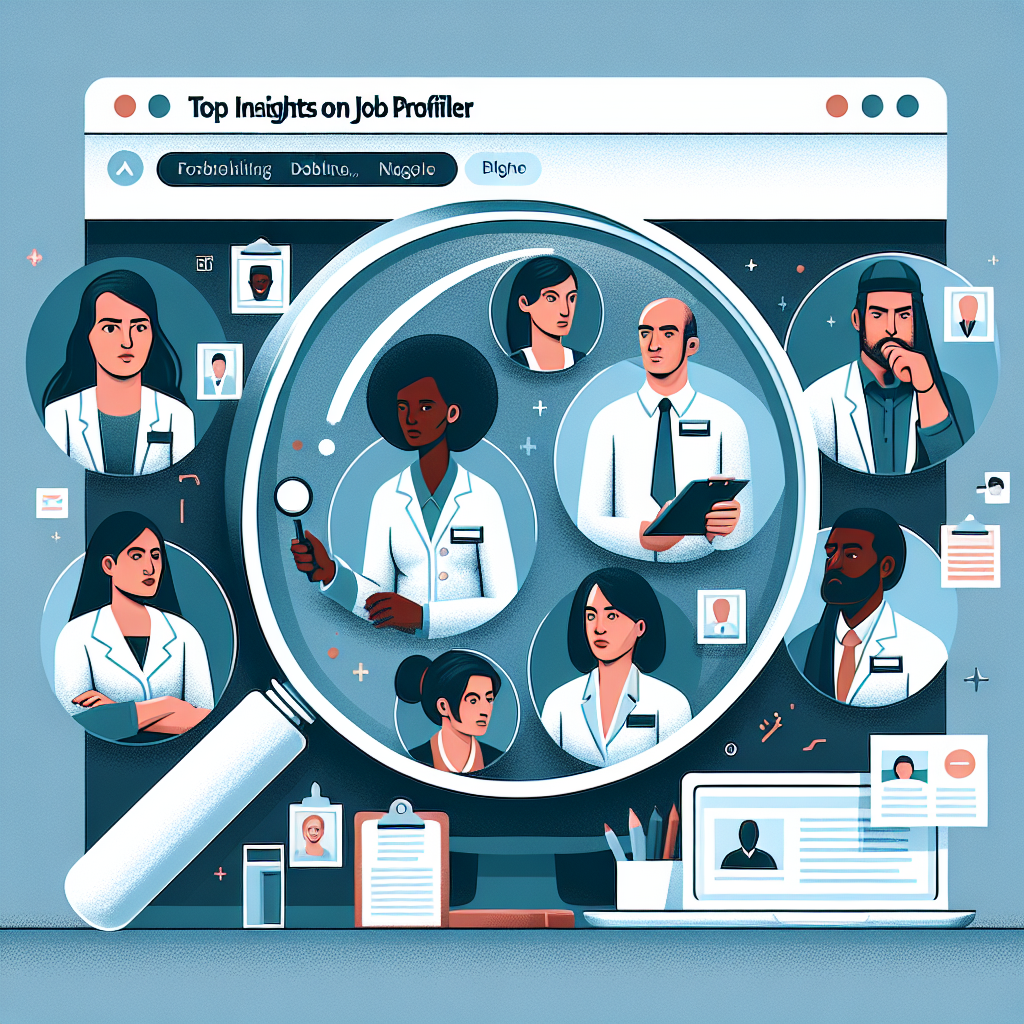Modern hiring and workforce planning rely on clear role definitions and actionable data. Top Insights on Job Profiler offers a concise way to understand how job profiling systems turn vague role descriptions into measurable competencies, hiring criteria, and development pathways. This article explains how job profilers work, where they help most, and practical tips to make profiling deliver real talent outcomes.
Top insights into job profiling tools
Job profiling is the structured process of documenting the responsibilities, required skills, performance indicators, and context for a given role. Effective job profiler tools combine subject-matter expertise with data analysis—sometimes aided by natural language processing and competency taxonomies—to produce profiles that hiring managers, recruiters, and L&D teams can use consistently.
Core components of a useful profile
A robust job profile typically includes:
- Purpose and primary responsibilities of the role
- Key tasks and expected outcomes
- Essential and preferred skills, knowledge, and behaviors
- Performance indicators and success metrics
- Context such as reporting lines, team interactions, and tools used
Why organizations invest in profiling
High-quality profiles reduce hiring bias, improve candidate-job fit, and streamline training plans. When profiles are data-driven, they support competency-based assessments and can be integrated into applicant tracking systems for automated shortlisting. Profiles also inform workforce planning by revealing skill gaps and future training needs.
How job profilers collect and validate information
Profilers use multiple inputs to ensure accuracy and applicability. Common sources include interviews with job incumbents and managers, surveys, task observation, HR systems data, and external occupational databases. Cross-validation—comparing internal findings against industry benchmarks—helps avoid idiosyncratic or outdated role definitions.
Technology and human judgment
Automated tools can parse job descriptions, extract keywords, and suggest competency labels, but human validation remains essential. SMEs contextualize automated outputs, adjust for organizational culture, and ensure that soft skills and team-fit elements are not overlooked. Blending algorithmic speed with expert oversight produces the most practical profiles.
Using profiles across HR processes
Well-crafted profiles support multiple HR functions:
- Recruitment: better job ads, clearer screening criteria, and more reliable interview guides
- Performance management: objective targets and consistent evaluation criteria
- Learning & development: mapped learning pathways aligned to role competency gaps
- Succession planning: visibility into transferable skills and readiness
Practical tips to maximize impact
To make profiling actionable, follow these best practices:
- Focus on outcomes and behaviors rather than vague traits
- Standardize competency names and levels across roles
- Update profiles periodically—every 12–18 months or after major process changes
- Train hiring managers and recruiters on how to use profiles in decisions
- Link profiles to job postings and internal mobility pathways for transparency
For teams focused on sourcing and posting opportunities—especially those engaging students or entry-level candidates—pair profiling outputs with targeted platforms. A helpful resource that compares job board options specifically for college students in the U.S. is the guide to job boards for college students in the USA (free and paid options), which can guide where to publish profile-driven job ads to reach early-career talent.
Common pitfalls to avoid
Organizations often stumble when profiles are too generic, rarely updated, or not integrated into day-to-day HR systems. Avoid copying vendor templates verbatim—profiles should reflect your workflows, tools, and success measures. Also be wary of overloading profiles with excessive tasks; focus on the 6–10 most critical responsibilities that determine success in the role.
Measuring profile effectiveness
Track indicators such as time-to-fill, new-hire time-to-productivity, quality-of-hire ratings, and internal mobility rates to determine if profiles are improving outcomes. Linking profiles to recruitment metrics provides tangible ROI for profiling initiatives. For occupational context and salary benchmarking when building profiles, credible occupational overviews like the BLS occupational profile for specific roles can provide useful external reference points—for example, see the BLS profile for software developers for role tasks and labor market data: BLS occupational profile for software developers.
Quick takeaways
- Profiles turn subjective job descriptions into objective, actionable documents.
- Combine automated analysis with SME validation for best results.
- Use profiles across recruitment, development, and succession to amplify value.
- Update profiles regularly and measure impact with hiring and performance metrics.
FAQ
Q: How often should job profiles be reviewed?
A: Review profiles at least annually or after major changes in technology, processes, or organizational structure to keep them relevant.
Q: Can small organizations benefit from formal profiling?
A: Yes—smaller firms gain clarity and consistency from simple, focused profiles that emphasize the core competencies and outcomes required for each role.
Q: What’s the difference between a job description and a job profile?
A: A job description lists duties and responsibilities, while a job profile includes measurable competencies, performance indicators, and context that support talent decisions across hiring, training, and performance management.



